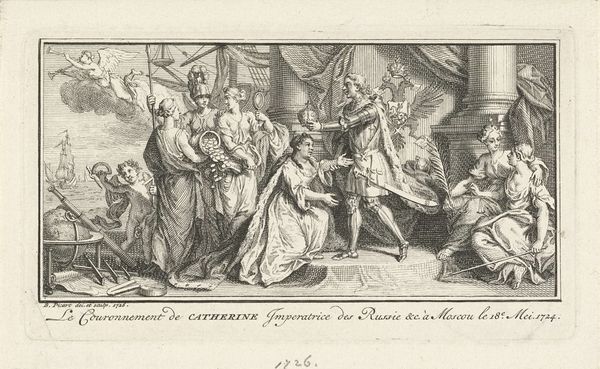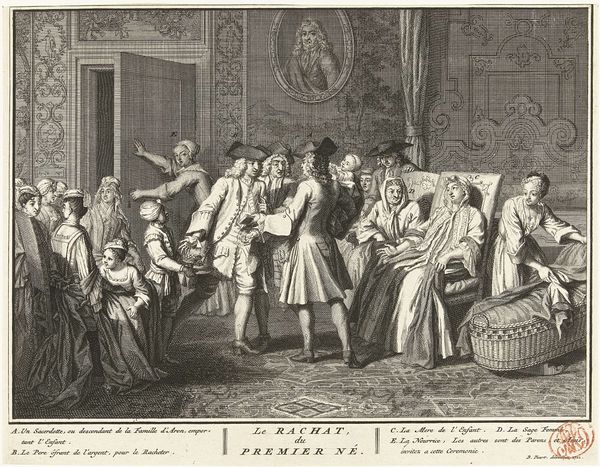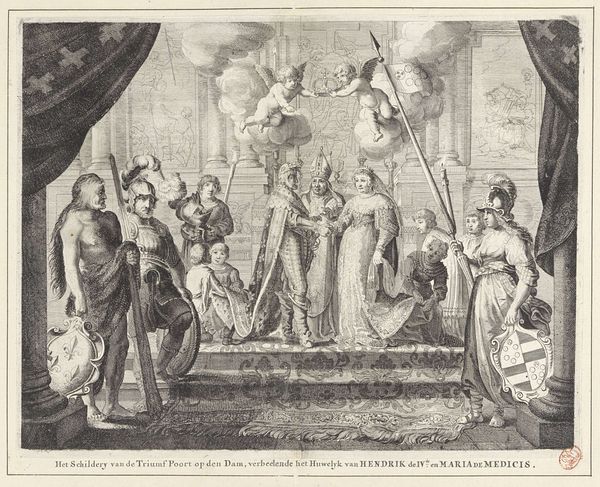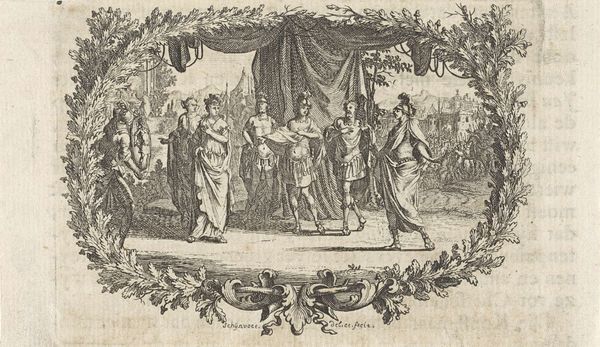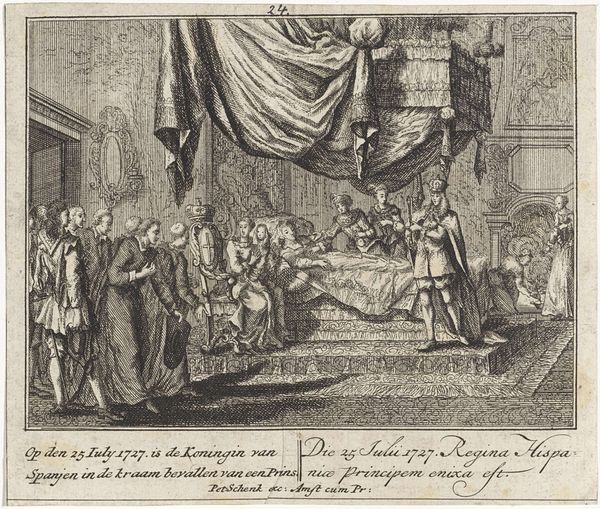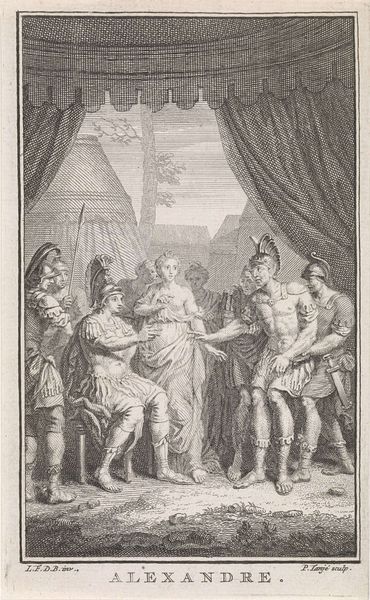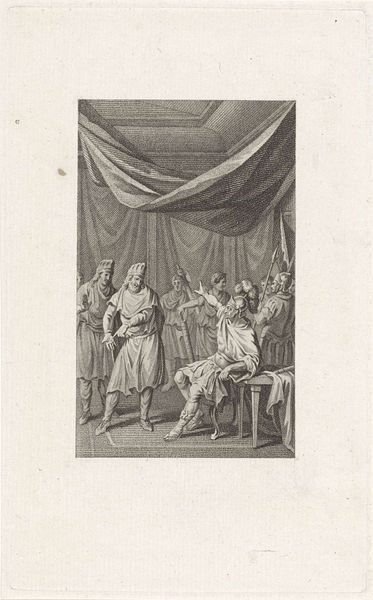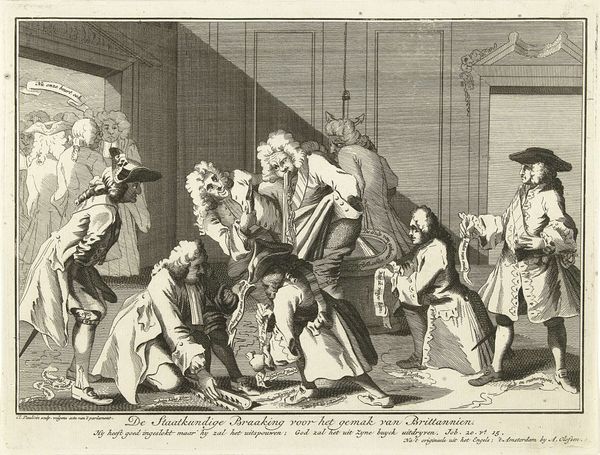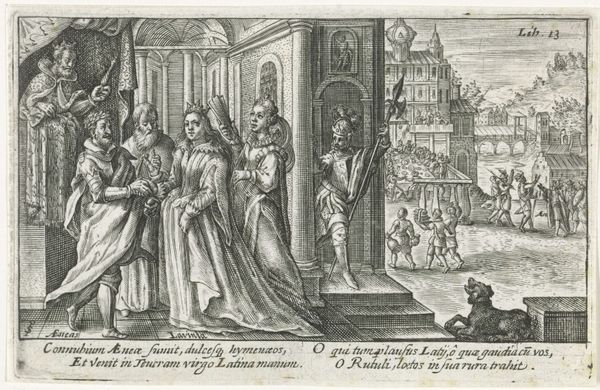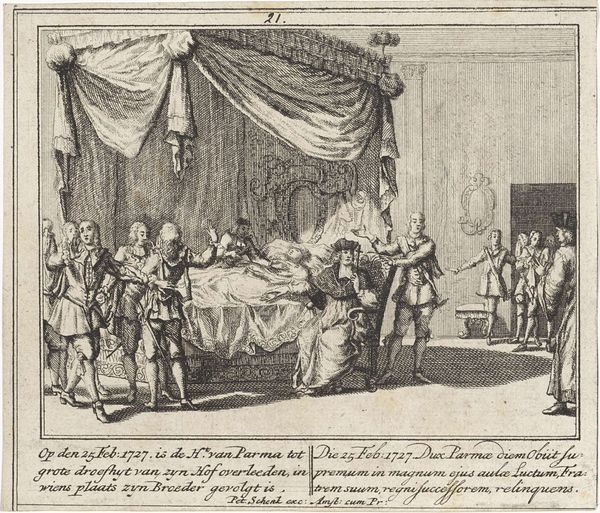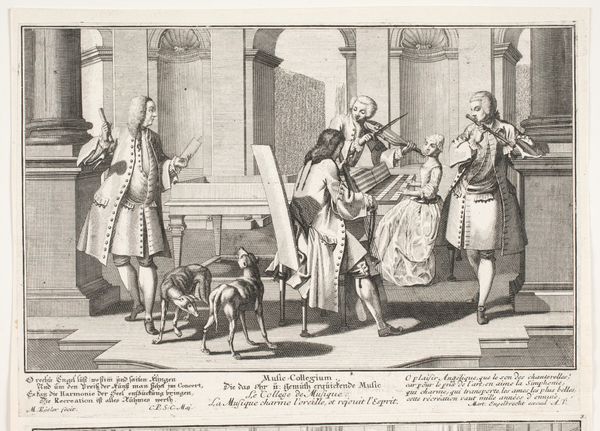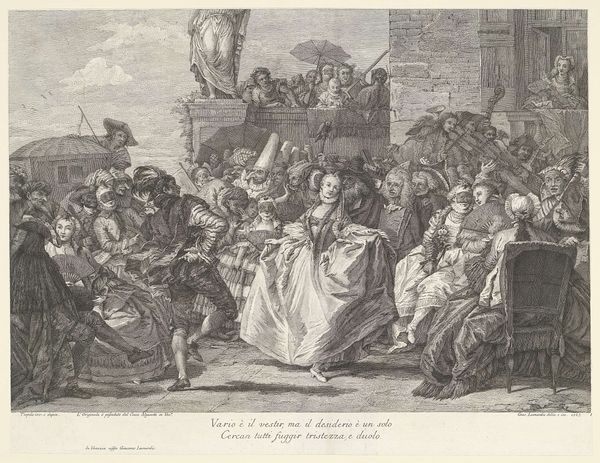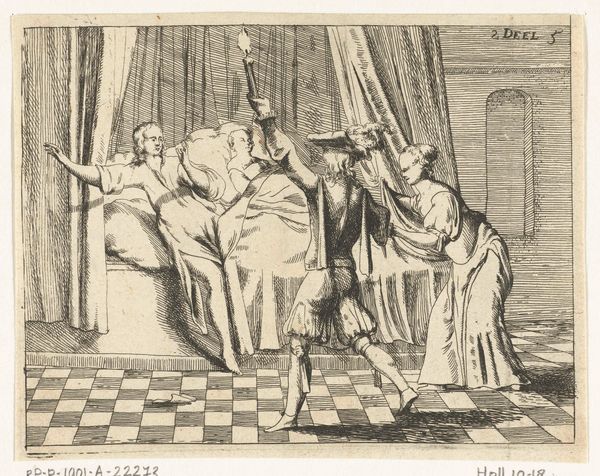
Spotprent op de verdeling van de Oostenrijkse landen door kardinaal Fleury, 1742 1742
0:00
0:00
print, engraving
#
allegory
#
baroque
# print
#
caricature
#
engraving
Dimensions: height 226 mm, width 253 mm
Copyright: Rijks Museum: Open Domain
Curator: This print, residing here at the Rijksmuseum, is entitled "Spotprent op de verdeling van de Oostenrijkse landen door kardinaal Fleury, 1742," dating, naturally, to 1742. It’s an engraving. Editor: My immediate impression is one of slightly chaotic elegance, a swirl of fabric and figures vying for attention, all rendered in exquisite detail despite the print's overall sparseness of tone. The central figure stands in stark nudity, bathed in light, flanked by scheming characters—quite theatrical. Curator: Indeed. The scene is dripping with political allegory, a biting caricature of the partitioning of Austrian lands orchestrated by Cardinal Fleury. Note how each figure represents a different European power, each vying for their slice of the Habsburg pie, with Fleury himself prominently depicted distributing the spoils. It speaks to the fraught power dynamics of 18th-century Europe and the scramble for resources. Editor: Absolutely. The formal composition certainly underlines that power dynamic, doesn't it? The naked figure, likely representing Austria, is visually subjugated by the surrounding, clothed figures. The stark contrast in light and shadow directs the viewer's eye directly to this vulnerability, enhancing the print’s satirical commentary. I am particularly drawn to the linear precision achieved in the drapery folds—such refinement for what amounts to a lampoon. Curator: And don't overlook the inscriptions beneath the image—verses meant to further amplify the satirical sting, framing Fleury’s actions as self-serving under the guise of camaraderie. The "Q--N of H---Y stript" suggests more directness too but with heavy censoring because the publisher obviously wanted to make a strong commentary about political actors without facing jail time. Editor: It’s interesting to observe how the artist manipulates line and form to convey political message. The baroque flourishes lend a certain grandeur, but the exaggerated features of the figures subtly undermine any sense of true nobility. This tension between aesthetic form and political content makes for a remarkably effective visual argument. Curator: Right. This piece shows us how art actively participates in public discourse, shaping perceptions of events and individuals, serving as a potent tool for political commentary beyond just aesthetics or taste. Editor: Ultimately, it's a brilliant example of how art, even in a seemingly simple print, can encapsulate a complex historical moment through keen observation and refined technique, achieving both critical commentary and enduring visual interest.
Comments
No comments
Be the first to comment and join the conversation on the ultimate creative platform.
